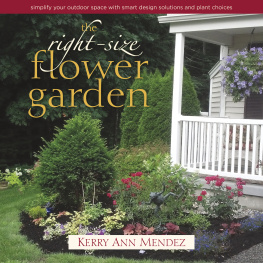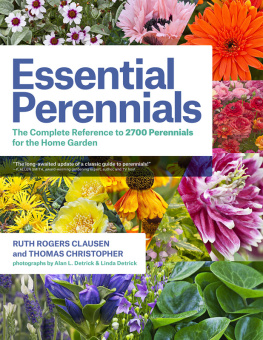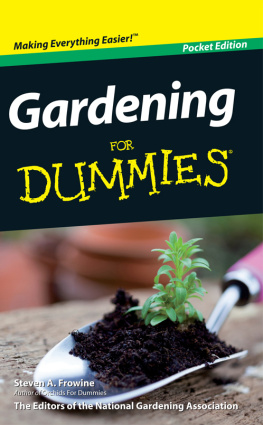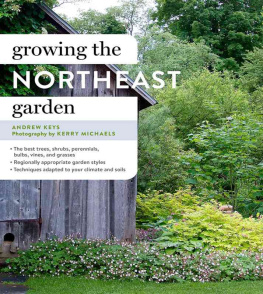This e-book provides colorful images for the outstanding plants featured in my top-selling book, The Ultimate Flower Gardeners Top Ten Lists - Money Saving Shortcuts, Design Tips & Smart Plant Picks for Zones 3 through 7 . I have updated some lists since the books 2010 publication plus reduced the number of plants featured on multiple lists. The more high performing plants profiled, the better! This e-book is the perfect shopping tool for picking no-fuss winners at garden centers and mail-order companies. I have trialed the majority of these plants in my display gardens (Zones 4/5). After twenty-five years as a tough-love garden teacher, designer and coach, my sweat-earned knowledge from successes and failures are yours. To learn more about garden design, plant care, what to do when, and money-saving tips, purchase The Ultimate Flower Gardeners Top Ten Lists - Money Saving Shortcuts, Design Tips & Smart Plant Picks at fine bookstores including Barnes & Noble, garden centers, Amazon.com and on my Perennially Yours Web site www.pyours.com.
Top Ten Spring Blooming Perennials for Full to Part Sun
Carnation, Pinks *
(Dianthus) 4 - 20 Many recent introductions are superior to older varieties. The plants bloom longer and the foliage stays neater and well mounded after flowering. Some of my favorites are in the Star Series. Eastern Star (red), Neon Star (bright pink), and Spangled Star (red and white) are great. The Dessert Series is sweet. Cranberry Ice, Raspberry Swirl and Strawberry Sorbet are shades of pink, burgundy and white. Both series have nice blue-grey foliage. Baths Pink has been around for a long time; a solid performer with soft pink blooms and blue foliage. All dianthus prefer sharply draining soil (another way of saying sandy). If you have clay you can cheat by working gravel or chicken grit into the soil and mounding the planting area slightly to increase drainage. Zones 4 9
Woods Phlox
(Phlox divaricata) 6 - 14 Woods Phlox boasts masses of flowers for a good five weeks. Blooms can be white, pink or lavender. All are extremely fragrant! Woods phlox are equally happy in sun or dappled shade. Plum Perfect (plum), Laphamii (lavender) and London Grove Blue (powder blue) are all strong performers. After flowering, shear them back to within two inches of the ground for a pleasing green mat. Woods phlox is my pick over the more common creeping phlox (sometimes called moss phlox). Woods phlox is fragrant, weed smothering, longer blooming, and deer resistant; not so creeping phlox. Zones 3 8
Tree Peony *
(Paeonia suffruticosa) 15 - 3+ Im going to assume you are already well acquainted with the common herbaceous (lactiflora) peony. Me too. Nice plant. But why not branch on to some more exotic types? Like Tree Peony. These hardy 4 - 5 shrubs have massive flowers in colors unavailable in common peonies: dreamy apricot, purple, near black and wisteria blue. Of course red, whites and pinks abound too. Tree Peonies never require pruning and can handle full sun or dappled light. These long-lived plants are quite drought tolerant once established. But be patient with them; they are slow growing but worth the journey. Zones 4 7
Blue Star Flower
(Amsonia) 12 - 3 Whats not to love about this perennial? Soft blue, starry flowers decorate smooth, willow-like leaves born by stiff stems that dont flop. The foliage of A. tabernaemontana and A. hubrichtii turn a glowing orangey-yellow in fall. Simply breathtaking next to fuller bodied fall blooming sedums and wispy Japanese anemones. Blue Ice is the shortest in the family at only 12 16 in stance. Zones 4 9 (some catalogs say Zone 5 but I have found Blue Star Flower very hardy)
False Indigo *
(Baptisia) 10 - 4 False Indigo is a tough, tap-rooted plant that wants to stay where its planted. Think long and hard before plopping the pot down in the garden. Most folks are familiar with the rich blue flowering indigo (australis), but there are also white, yellow, purple, and multicolor varieties. Some favorites are Twilite PrairieBlues (purple and yellow), Carolina Moonlight (soft yellow), Purple Smoke (smokey purple) and Midnight PrairieBlues (rich blue). All Baptisias have attractive seedpods. Baptisias take a few years to get established before sending forth flowers. This is one plant I would splurge for a gallon sized pot versus a four inch container. Zones 3 9
Cushion Spurge *
(Euphorbia) 6 - 24 This family has a lot of funky members with foliage that is a lot showier than their spring flowers. Either way, they make a statement. The most commonly sold variety is polychroma. It has bright yellow flowers in spring and green leaves. But why not step it up a notch and plant First Blush (pink, white and green leaves), Bonfire (burgundy-red leaves),Chameleon (bronzy-purple leaves) or Ascot Rainbow (green and yellow leaves with orange tips in cooler weather)? All have bright yellow flowers and benefit from a hard shear after blooming to create a neat, tight mound. Dont be timid when pruning these back. I shear them by 1/3 to their height. If you have sensitive skin, wear gloves when pruning spurges as the sap may cause a rash. Polychroma, Zones 3 - 8. All others are Zones 5 - 8
Ladys Mantle *
(Alchemilla) 6 - 18 Ladys Mantle is a must for cottage gardens. Its frothy greenish-yellow flowers foam forth from crisp, scalloped leaves. I like placing Ladys Mantle along a gardens edge so it can billow onto hard surfaces and soften transition lines. To keep it looking pretty all season, prune older leaves with browning edges to reveal fresh new leaves below. For a petite look, use A. erythropoda that only get 6 - 8 tall. A. alpina is the same size as erythropoda but each of its leaves has a silvery edge giving it a very elegant look. Zones 3 - 7














